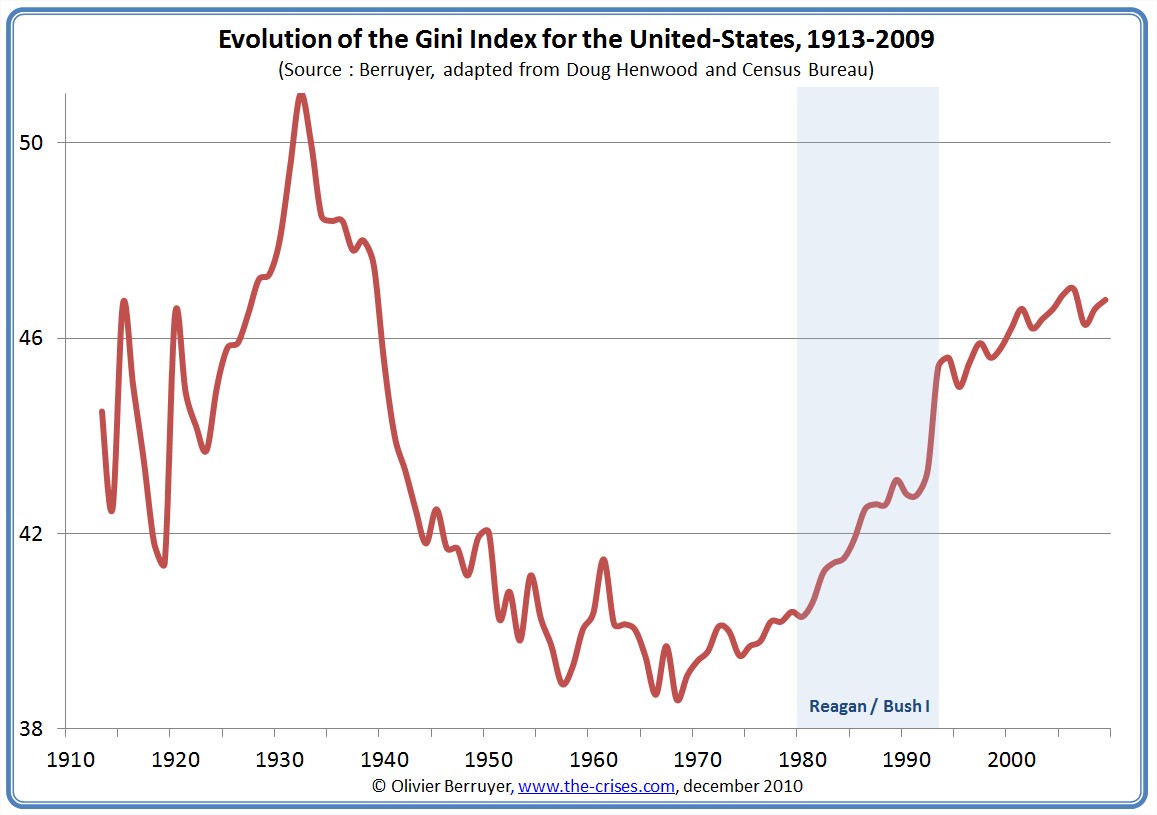The Great Leveler starts its chapter on war by describing the American occupation of Japan after World War II; for Scheidel it’s the central example of how a mobilizing war influenced egalitarian policies in the following decades. For me, it was a shock mostly because it got me thinking about a time and place I hadn’t thought about much before. My thoughts were something like, “We defeated Japan and then forced them to adopt democracy at gunpoint, and it worked. How crazy is that?”
Certainly one lesson many drew from the Iraq War was that you can’t impose democracy at gunpoint. But clearly you can, some of the time; what are the conditions that make it possible? And to expand on a theme I mentioned near the end of the previous book review: Is high modernism and top-down planning really as uniformly bad as its critics say? With these questions in mind, I read John W. Dower’s Embracing Defeat: Japan in the Wake of World War II and Frederick Taylor’s Exorcising Hitler: The Occupation and Denazification of Germany.
This review, and even the readings, are a bit of an experiment for me: Social science is my thing, and while the books I read are often cite historical incidents, they’re usually about some generalized form of human behavior, not straightforward accounts of what happened in certain times and places.
Were these democratic transitions actually a big deal?
I want to touch briefly on a topic neither of the books I read spends much time on: The political systems of Germany and Japan just before World War II. Both Germany’s Weimar Republic and Japan’s lesser-known Taishō Democracy were more-or-less functional constitutional democracies. Given that, you might think nothing special happened in Japan or Germany after the War; they simply resumed democracy after an interlude of totalitarian insanity.
That’s a very misleading view: Democracy often takes many years and multiple tries before it sticks, and both the Weimar Republic and the Taishō Democracy were fighting for their lives from the moment they were born. Common words to describe them include “fledgling”, “failed”, and “unstable.” The Taishō Democracy, in particular, never had full civilian control of the military. A return to “normalcy” for Japan or Germany could have just as easily meant a return to non-totalitarian military dictatorships, so the question of why post-War democracy took hold and survived in the long term is a real and important one.
Post-War Germany
There are two really important things to understand about Germany immediately after the War:
- It was divided into four zones, controlled by the Americans, British, French, and Soviets. The Cold War hadn’t quite started yet, but it was about to.
- It was a huge mess, lots of war crimes were committed against Germans (especially by the Russians, who had been abused quite horribly by the Nazis during the War), and everyone was starving.
In the interest of not totally glossing over all the suffering and human rights abuses, I’ll at least provide links that describe two of the more notable events of the era: The ethnic cleansing of Germans from Eastern Europe and the neglect and starvation of German P.O.W.s. But ultimately the “four zones” thing, and especially the rivalry between the Western Powers and the Soviets, was more relevant to the reestablishment of democracy.
The Soviets were strikingly efficient about setting up an occupation government, compared to the Western Powers; the Communist Party of Germany, controlled by Comintern, provided a ready-made party structure and a network of activists with knowledge of local conditions and politics. And the Soviets suffered no doubts as to what exactly they wanted to do in Germany: Rebuild it as a Communist state controlled by Stalin.
The Western Powers, on the other hand, began the occupation with no clear plan other than not letting Germany rearm and start World War III. The early Morgenthau Plan even proposed that Germany be permanently deindustrialized, allowed only an agrarian economy. The political disputes around the plan are a bit hard for me to follow, but in general it seems that Roosevelt was quite sympathetic to the plan, very much to the objection of Churchill and to his own State Department. Whatever the case, Roosevelt died before the end of the war, and the United States instead eventually implemented the Marshall Plan, which funded large-scale economic recovery programs aimed at strengthening Western European industry and rebuilding West Germany as bulwark against Communism.
Post-War Japan
The Japanese occupation, in contrast, was run by the United States alone, dominated by the personality of General Douglas MacArthur, who pretty much seems to have been the Team America: World Police song in human form. Unlike his counterparts in Germany, MacArthur knew exactly what he wanted to do in Japan: Rebuild it as a liberal democracy.
Occupation and democratization in Japan seems to have had more than a hint of The White Man’s Burden to it. Whereas everyone seemed to assume that democracy was the default state Germany would return to, many doubted whether the Japanese people were ready for it. I’m not sure how ironic I should find that:
- On one hand, Germany and Japan each had just over a decade’s prrior experience with democracy; the Weimar Republic and the Taishō Democracy could be seen as parallel first steps toward democracy by previously militaristic societies. So why should anyone have expected Germany to be better at democracy than Japan?
- On the other hand, it seems to me that despite superficial similarities, the Weimar Republic really was more democratic than the Taishō Democracy; Japan was still formally a monarchy and it it’s possible that democracy sprouted there only because Emperor Taishō had cerebral meningitis and couldn’t do much to stop it.
Whatever the case, MacArthur centered his strategy around the belief that it was necessary to keep Emperor Hirohito on the throne, as a defanged symbol of continuity between old and new Japan. MacArthur essentially promised that the United States would play along with the ruse that Hirohito had been dragged into war unwillingly by his military advisors, so long as Hirohito consistently said nice things to the Japanese people about democracy and the United States.
The Japanese constitution is perhaps the most shocking example of how ambitious and high-handed the occupation was. MacArthur’s office called upon Prime Minister Shidehara to draft a new constitution; Shidehara’s appointees suggested keeping the Meiji Constitution in place with only minor changes. MacArthur rejected their proposal outright and instead assigned the task to…well, two dozen Americans who weren’t too busy that week. And I do mean a literal, singular week — at less than 5000 words the Japanese constitution is one of the shortest in the world in part because the drafters simply didn’t have time to write anything longer. None of the committee members knew anything about constitutional law, though several were lawyers and they did most of the writing; the only member who spoke decent Japanese or knew anything about Japanese culture was Beate Sirota, who had no specific formal qualifications but was well-educated and grew up in Japan. The constitution was then presented to what Dower describes as “the completely unsuspecting Japanese government” for minor revisions.
Exorcising Hitler?
Even though “denazification” is in the title of Taylor’s book, he really doesn’t have all that much to say about it. And perhaps that’s because there wasn’t all that much to say; denazification was generally a lackluster affair. The top surviving Nazis in Germany and the highest-ranking militarists in Japan were tried, convicted, and executed, with the notable exceptions of Hirohito and his family. A few thousand other Nazis and militarists were convicted of various war crimes and human rights violations; a vastly larger number were not tried or convicted for their crimes, and overall the process seems to have been pretty arbitrary.
A much larger number of people associated with the military regimes were banned from holding political office. So far as I can tell these bans were temporary in Japan, but in theory tens of thousands of former Nazis were banned for life from holding office in Germany. In practice, those bans don’t seem to have been enforced consistently. I will note that most democratic transitions don’t involve this sort of ban — in Guatemala, for example, the former dictator’s party actively participated in democratic politics, and in Nicaragua, the former Sandinista dictator is now the elected president. A similar and very controversial policy was implemented in Iraq. Of course, one could argue that since these dictatorship never committed atrocities on the scale of the World War II totalitarian states, there was less justification for banning former officials from power.
I was a little disappointed by Taylor’s coverage of denazification — again, given that it’s mentioned in the title of the book — but he did clarify something that I had been confused about: Did Germans begin reckoning seriously with the Holocaust immediately after the War? The short answer is that they didn’t. The common German attitude after the war was firmly in “Hitler had some good ideas” territory; it wasn’t until more than a decade later, beginning with the Ulm Einsatzkommando trial and continuing with the Frankfurt Auschwitz trials, that Germans began to adopt the attitude of penitence we are familiar with today.
Are there lessons here?
As I mentioned, I mostly read and review books about social science and policy. As such, I’m inevitably tempted to try to draw lessons from this sample of two, about what made the “democracy from above” a success in Germany and Japan but a failure in Iraq. It’s probably a futile effort, but here are some disorganized thoughts:
- On one hand, it’s clear that a country can successfully transition from totalitarianism to democracy with very little in the way of honest reckoning or consistent justice. Germany took a long time to do that, and Japan has never really done it; both are considered full democracies.
- On the other hand, banning high-ranking members of the old regime from participation in democratic governance might be a part of the recipe for success.
- The Allied occupiers after World War II had almost unlimited legitimacy throughout the world, other than disagreements between Communism and the Western Powers. This probably gave them freedom to implement controversial policies that the United States did not have while occupyingIraq.
- Neither Germany nor Japan had a long history of democracy before the War; however, they did have long histories of centralized, effective state control, and neither suffered from major ethnic strife (other than Germans versus Jews, I suppose.) Iraq, in contrast, had a relatively weak state and high levels of ethnic conflict. One could argue, in fact, that democracy per se in Iraq has done just fine, and the main problem is that Iraq has not been able to achieve law and order.

